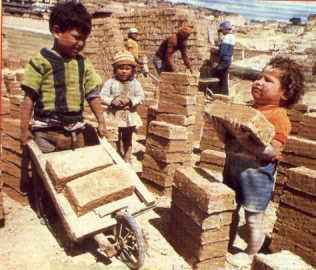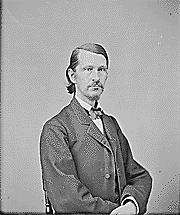|
Brookside Mills
Brookside Mills was a textile manufacturing company that operated in Knoxville, Tennessee, United States, in the late 19th and early 20th centuries. The company's Second Creek factory was the city's largest employer in the early 1900s.East Tennessee Historical Society, Lucile Deaderick (ed.), ''Heart of the Valley: A History of Knoxville, Tennessee'' (Knoxville, Tenn.: East Tennessee Historical Society, 1976), pp. 46–47. Brookside Village, a neighborhood in North Knoxville, was originally developed to house many of the factory's workers. The company closed in 1956.Michael J. McDonald and W. Bruce Wheeler, ''Knoxville, Tennessee: Continuity and Change in an Appalachian City'' ( (Knoxville, Tenn.: University of Tennessee Press, 1983), pp. 96–99. History After the Civil War, Knoxville grew to become the third largest wholesaling center in the southeastern United States. In the 1870s and 1880s, wholesale company owners began reinvesting their profits in other industries, help ... [...More Info...] [...Related Items...] OR: [Wikipedia] [Google] [Baidu] |
Clarence Brown
Clarence Leon Brown (May 10, 1890 – August 17, 1987) was an American film director. Early life Born in Clinton, Massachusetts, to Larkin Harry Brown, a cotton manufacturer, and Katherine Ann Brown (née Gaw), Brown moved to Tennessee when he was 11 years old. He attended Knoxville High School And the University of Tennessee, both in Knoxville, Tennessee, graduating from the university at the age of 19 with two degrees in engineering. An early fascination in automobiles led Brown to a job with the Stevens-Duryea Company, then to his own Brown Motor Car Company in Alabama. He later abandoned the car dealership after developing an interest in motion pictures around 1913. He was hired by the Peerless Studio at Fort Lee, New Jersey, and became an assistant to the French-born director Maurice Tourneur. Career After serving as a fighter pilot and flight instructor in the United States Army Air Service during World War I, [...More Info...] [...Related Items...] OR: [Wikipedia] [Google] [Baidu] |
Holston Gases
Holston may refer to: * Holston, Virginia *Holston River *Holston Formation * Treaty of Holston *Holston Conference, an annual conference within Methodism * Holston Army Ammunition Plant in Kingsport, Tennessee *The Holston, an NRHP-listed high-rise in Knoxville, Tennessee People with the surname *Alan Holston Alan Holston was a British fashion entrepreneur, one of the co-founders of Dandie Fashions, a Chelsea, London, Chelsea boutique that was a key part of Swinging London. Career In 1966, following a chance encounter at the Speakeasy Club with Freddie ..., British fashion entrepreneur * David Holston (born 1986), American basketball player * Mike Holston (born 1958), American football player {{disambiguation, geo, surname ... [...More Info...] [...Related Items...] OR: [Wikipedia] [Google] [Baidu] |
Interstate 275 (Tennessee)
Interstate 275 (I-275) is an Interstate Highway in Tennessee that serves Knoxville by connecting the downtown with I-75/ I-640/ US Route 25W (US 25W). Measuring in length, it runs from a northern terminus at the junction with I-75/I-640/US 25W to a southern terminus at I-40. I-275 was formerly a section of I-75, which was rerouted onto I-640 in 1980 after a section of that route was completed. Route description I-275 begins at a complicated interchange with I-40 in Downtown Knoxville. US 441 southbound (Henley Street), State Route 62 (SR 62, Western Avenue), and 11th Street are also directly accessible from I-275 southbound at this interchange, and northbound I-275 is directly accessible from US 441 northbound and SR 62 here. About north of this point, I-275 has an interchange with Baxter Avenue and then Woodland Avenue about later. The route then curves sharply to the northwest and then sharply to the northeast about later ... [...More Info...] [...Related Items...] OR: [Wikipedia] [Google] [Baidu] |
Weaving
Weaving is a method of textile production in which two distinct sets of yarns or threads are interlaced at right angles to form a fabric or cloth. Other methods are knitting, crocheting, felting, and braiding or plaiting. The longitudinal threads are called the warp and the lateral threads are the weft, woof, or filling. The method in which these threads are interwoven affects the characteristics of the cloth. Cloth is usually woven on a loom, a device that holds warp threads in place while filling threads are woven through them. A fabric band that meets this definition of cloth (warp threads with a weft thread winding between) can also be made using other methods, including tablet weaving, back strap loom, or other techniques that can be done without looms. The way the warp and filling threads interlace with each other is called the weave. The majority of woven products are created with one of three basic weaves: plain weave, satin weave, or twill weave. Woven cl ... [...More Info...] [...Related Items...] OR: [Wikipedia] [Google] [Baidu] |
Salaries
A salary is a form of periodic payment from an employer to an employee, which may be specified in an employment contract. It is contrasted with piece wages, where each job, hour or other unit is paid separately, rather than on a periodic basis. Salary can also be considered as the cost of hiring and keeping human resources for corporate operations, and is hence referred to as personnel expense or salary expense. In accounting, salaries are recorded in payroll accounts. A salary is a fixed amount of money or compensation paid to an employee by an employer in return for work performed. Salary is commonly paid in fixed intervals, for example, monthly payments of one-twelfth of the annual salary. Salaries are typically determined by comparing market pay-rates for people performing similar work in similar industries in the same region. Salary is also determined by leveling the pay rates and salary ranges established by an individual employer. Salary is also affected by the number of pe ... [...More Info...] [...Related Items...] OR: [Wikipedia] [Google] [Baidu] |
Incentives
In general, incentives are anything that persuade a person or organization to alter their behavior to produce the desired outcome. The laws of economists and of behavior state that higher incentives amount to greater levels of effort and therefore higher levels of performance. For comparison, a disincentive is something that discourages from certain actions. Divisions An incentive is a powerful tool to influence certain desired behaviors or action often adopted by governments and businesses. Incentives can be broadly broken down into two categories: intrinsic incentives and extrinsic incentives. Overall, both types of incentives can be powerful tools often employ to increase effort and higher performance according to the "law of behavior." Incentives are most studied in the area of personnel economics where economic analysts, such as those who take part in human resources management practices, focus on how firms make employees more motivated, through pay and career concerns, c ... [...More Info...] [...Related Items...] OR: [Wikipedia] [Google] [Baidu] |
World War II
World War II or the Second World War (1 September 1939 – 2 September 1945) was a World war, global conflict between two coalitions: the Allies of World War II, Allies and the Axis powers. World War II by country, Nearly all of the world's countries participated, with many nations mobilising all resources in pursuit of total war. Tanks in World War II, Tanks and Air warfare of World War II, aircraft played major roles, enabling the strategic bombing of cities and delivery of the Atomic bombings of Hiroshima and Nagasaki, first and only nuclear weapons ever used in war. World War II is the List of wars by death toll, deadliest conflict in history, causing World War II casualties, the death of 70 to 85 million people, more than half of whom were civilians. Millions died in genocides, including the Holocaust, and by massacres, starvation, and disease. After the Allied victory, Allied-occupied Germany, Germany, Allied-occupied Austria, Austria, Occupation of Japan, Japan, a ... [...More Info...] [...Related Items...] OR: [Wikipedia] [Google] [Baidu] |
National Child Labor Committee
The National Child Labor Committee (NCLC) was a private, non-profit organization in the United States that served as a leading proponent for the national child labor reform movement. Its mission was to promote "the rights, awareness, dignity, well-being and education of children and youth as they relate to work and working." NCLC, headquartered on Broadway (Manhattan), Broadway in Manhattan, New York, was administered by a board of directors, with the last chair head being Betsy Brand. Formation Edgar Gardner Murphy, an American clergyman and author, is credited with proposing the National Child Labor Committee following a conference between Murphy's Alabama Child Labor Committee, and the New York Child Labor Committee. The conference culminated on April 25, 1904 at a mass meeting held in Carnegie Hall, New York City. At the meeting, both men and women concerned with the plight of working children overwhelmingly supported the formation of the National Child Labor Committee, and F ... [...More Info...] [...Related Items...] OR: [Wikipedia] [Google] [Baidu] |
Child Labor
Child labour is the exploitation of children through any form of work that interferes with their ability to attend regular school, or is mentally, physically, socially and morally harmful. Such exploitation is prohibited by legislation worldwide, although these laws do not consider all work by children as child labour; exceptions include work by child artists, family duties, supervised training, and some forms of work undertaken by Amish children, as well as by Indigenous children in the Americas. Child labour has existed to varying extents throughout history. During the 19th and early 20th centuries, many children aged 5–14 from poorer families worked in Western nations and their colonies alike. These children mainly worked in agriculture, home-based assembly operations, factories, mining, and services such as news boys—some worked night shifts lasting 12 hours. With the rise of household income, availability of schools and passage of child labour laws, the inci ... [...More Info...] [...Related Items...] OR: [Wikipedia] [Google] [Baidu] |
Lewis Hine
Lewis Wickes Hine (September 26, 1874 – November 3, 1940) was an American sociologist and muckraker photographer. His photographs taken during times such as the Progressive Era and the Great Depression captured young children working in harsh conditions, playing a role in bringing about the passage of the first child labor laws in the United States. Early life Hine was born in Oshkosh, Wisconsin, on September 26, 1874. Following the accidental death of his father, the teenaged Hine was forced to undertake a number of jobs to support his widowed mother and sisters. Aspiring to become an educator like his mother, Hine managed to save a portion of his earnings as the family breadwinner to pay for schooling at the University of Chicago, where he enrolled in 1900. While a student in Chicago, Hine met Frank Manny, a professor of education at the Normal School who was named superintendent of the Ethical Culture School in New York City in 1901. At Manny’s invitation, Hine accepted ... [...More Info...] [...Related Items...] OR: [Wikipedia] [Google] [Baidu] |
Horace Maynard
Horace Maynard (August 30, 1814 – May 3, 1882) was an American educator, attorney, politician and diplomat active primarily in the second half of the 19th century. Initially elected to the House of Representatives from Tennessee's 2nd Congressional District for the term commencing on March 4, 1857, Maynard, an ardent Union supporter and abolitionist, became one of the few Southern congressmen to maintain his seat in the House during the Civil War. Toward the end of the war, Maynard served as Tennessee's attorney general under Governor Andrew Johnson, and later served as ambassador to the Ottoman Empire under President Ulysses S. Grant and Postmaster General under President Rutherford B. Hayes.Oliver P. Temple, Notable Men of Tennessee, From 1833 to 1875, Their Times and Their Contemporaries' (New York: Cosmopolitan Press, 1912), pp. 137-149. Maynard left his teaching position at East Tennessee College in the early 1840s to pursue a career in law, and quickly developed a ... [...More Info...] [...Related Items...] OR: [Wikipedia] [Google] [Baidu] |









